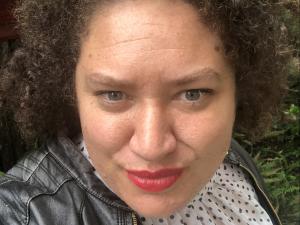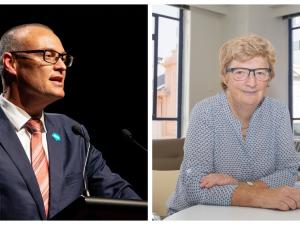Respiratory physician Lutz Beckert considers chronic obstructive pulmonary disease management, including the prevention of COPD, the importance of smoking cessation and pulmonary rehabilitation, and the lifesaving potential of addressing treatable traits. He also discusses the logic of inhaler therapy, moving from single therapy to dual and triple therapy when indicated, as well as other aspects of management
How majority became ‘alternate view’ on Māori issue – inner workings of the Simpson review
How majority became ‘alternate view’ on Māori issue – inner workings of the Simpson review

“We don’t run these things by majority or not. We don’t vote on things”
Health review chief Heather Simpson has defended the proposed Māori Health Authority, which critics say will be weak and will again breach the Treaty of Waitangi.
Ms Simpson says she simply doesn’t know how an authority with full commissioning and funding powers could function. A “full, separate system all the way through” would undermine the cohesion of the health system.
The final report of the Health and Disability System Review, which she chaired, recommends creating the authority, which would have monitoring and advisory powers, but only a relatively small budget of $23 million. It would not have wide powers to commission health services.
Health minister David Clark has described it as the “elevation” of the Ministry of Health’s Māori health directorate. In releasing the report on Tuesday, he said the Cabinet had accepted its “direction of travel” and decisions on individual recommendations would go to Cabinet in coming months “and into the next term of Parliament”.
A majority of the review panel – four of the seven members – and all six members of the panel’s Māori expert advisory group supported a four-page “alternate view”, published in the final report, which criticises the proposal of a Māori Health Authority without a “fully empowered commissioning role”.
Commenting on the report, National Hauora Coalition chief executive Simon Royal and senior lecturer Rhys Jones, of Te Kupenga Hauora Māori at the University of Auckland, have both said establishing the new authority as proposed would breach te Tiriti o Waitangi.
In a phone interview, New Zealand Doctor asked Ms Simpson why the alternate view was presented as such when it was the majority view.
“Because this is a consensus report,” she says. “We don’t run these things by majority or not. We don’t vote on things. This is our report. The rest of the report is a full consensus. Some people wanted to put a different point of view, which was not part of the consensus, and so that was why it was included.”
Asked for a definition of consensus, she says: “It means we all agree.”
Asked if she could confirm there was a threat of a walkout or withdrawal from the panel over the issue, she says, “No I can’t confirm that ... I’m not commenting, I’m not getting into that.
“There was a consensus report, an alternative view was published in the report, and that’s all I’ve got to say about it.”
Those who signed up to the alternate view are panel members Shelley Campbell, Peter Crampton, Lloyd McCann and Winfield Bennett, and Māori expert advisory group members Sharon Shea, Dale Bramley (Waitematā DHB chief executive), Terryann Clark, Sue Crengle, Takutai Moana Natasha Kemp and Linda Ngata.
Professor Crampton has said the alternate view’s inclusion in the report resulted from vigorous debate. Its inclusion keeps the issue on the policy agenda.
Ms Shea has said it means the issue remains open to debate.
Ms Simpson, when asked if she did not favour the authority’s having full funding and commissioning powers owing to fear of unfavourable public and political reaction, says, “No, I’m not afraid.
“What the report has put together is an integrated system. The fundamental part of the system is about actually integrating all the services, planning at the local level for the community, whatever the make-up of those communities is, and ensuring that the services are designed to be appropriate for those communities.
“That’s where it all starts, that, along with the overall long-term planning of the system as a whole.
“If we start separating out parts of that and either have to plan separately or not do combined planning, but fund some groups separately from others, then the whole cohesiveness of the system falls over.”
She says the report is clear the system needs to improve both commissioning, especially for kaupapa Māori services, and understanding of what makes services better for Māori people.
“The only difference of opinion is whether you separate out the funding and if you are going to try [to do that] at the centre level, how do you do that, because I don’t know how to do that.
“And how do you therefore have a full, separate system all the way through, with separate commissioning for what are in many places quite hard-to-define communities?”
"So there’s no disagreement in the recommendations.”
“In a community – as we’ve said in the report – somewhere like East Cape, we would be encouraging the DHB to be working jointly with the [iwi] runanga there to develop the tier 1 services.
“In that sort of situation, I would see the runanga as being co-governors of the system.”







![Barbara Fountain, editor of New Zealand Doctor Rata Aotearoa, and Paul Hutchison, GP and senior medical clinician at Tāmaki Health [Image: Simon Maude]](/sites/default/files/styles/thumbnail_cropped_100/public/2025-03/Barbara%20Fountain%2C%20editor%20of%20New%20Zealand%20Doctor%20Rata%20Aotearoa%2C%20and%20Paul%20Hutchison%2C%20GP%20and%20senior%20medical%20clinician%20at%20T%C4%81maki%20Health%20CR%20Simon%20Maude.jpg?itok=-HbQ1EYA)
![Lori Peters, NP and advanced health improvement practitioner at Mahitahi Hauora, and Jasper Nacilla, NP at The Terrace Medical Centre in Wellington [Image: Simon Maude]](/sites/default/files/styles/thumbnail_cropped_100/public/2025-03/2.%20Lori%20Peters%2C%20NP%20and%20advanced%20HIP%20at%20Mahitahi%20Hauora%2C%20and%20Jasper%20Nacilla%2C%20NP%20at%20The%20Terrace%20Medical%20Centre%20in%20Wellington%20CR%20Simon%20Maude.jpg?itok=sUfbsSF1)
![Ministry of Social Development health and disability coordinator Liz Williams, regional health advisors Mary Mojel and Larah Takarangi, and health and disability coordinators Rebecca Staunton and Myint Than Htut [Image: Simon Maude]](/sites/default/files/styles/thumbnail_cropped_100/public/2025-03/3.%20Ministry%20of%20Social%20Development%27s%20Liz%20Williams%2C%20Mary%20Mojel%2C%20Larah%20Takarangi%2C%20Rebecca%20Staunton%20and%20Myint%20Than%20Htut%20CR%20Simon%20Maude.jpg?itok=9ceOujzC)
![Locum GP Helen Fisher, with Te Kuiti Medical Centre NP Bridget Woodney [Image: Simon Maude]](/sites/default/files/styles/thumbnail_cropped_100/public/2025-03/4.%20Locum%20GP%20Helen%20Fisher%2C%20with%20Te%20Kuiti%20Medical%20Centre%20NP%20Bridget%20Woodney%20CR%20Simon%20Maude.jpg?itok=TJeODetm)
![Ruby Faulkner, GPEP2, with David Small, GPEP3 from The Doctors Greenmeadows in Napier [Image: Simon Maude]](/sites/default/files/styles/thumbnail_cropped_100/public/2025-03/5.%20Ruby%20Faulkner%2C%20GPEP2%2C%20with%20David%20Small%2C%20GPEP3%20from%20The%20Doctors%20Greenmeadows%20in%20Napier%20CR%20Simon%20Maude.jpg?itok=B0u4wsIs)
![Rochelle Langton and Libby Thomas, marketing advisors at the Medical Protection Society [Image: Simon Maude]](/sites/default/files/styles/thumbnail_cropped_100/public/2025-03/6.%20Rochelle%20Langton%20and%20Libby%20Thomas%2C%20marketing%20advisors%20at%20the%20Medical%20Protection%20Society%20CR%20Simon%20Maude.jpg?itok=r52_Cf74)
![Specialist GP Lucy Gibberd, medical advisor at MPS, and Zara Bolam, urgent-care specialist at The Nest Health Centre in Inglewood [Image: Simon Maude]](/sites/default/files/styles/thumbnail_cropped_100/public/2025-03/7.%20Specialist%20GP%20Lucy%20Gibberd%2C%20medical%20advisor%20at%20MPS%2C%20and%20Zara%20Bolam%2C%20urgent-care%20specialist%20at%20The%20Nest%20Health%20Centre%20in%20Inglewood%20CR%20Simon%20Maude.jpg?itok=z8eVoBU3)
![Olivia Blackmore and Trudee Sharp, NPs at Gore Health Centre, and Gaylene Hastie, NP at Queenstown Medical Centre [Image: Simon Maude]](/sites/default/files/styles/thumbnail_cropped_100/public/2025-03/8.%20Olivia%20Blackmore%20and%20Trudee%20Sharp%2C%20NPs%20at%20Gore%20Health%20Centre%2C%20and%20Gaylene%20Hastie%2C%20NP%20at%20Queenstown%20Medical%20Centre%20CR%20Simon%20Maude.jpg?itok=Z6u9d0XH)
![Mary Toloa, specialist GP at Porirua and Union Community Health Service in Wellington, Mara Coler, clinical pharmacist at Tū Ora Compass Health, and Bhavna Mistry, specialist GP at Porirua and Union Community Health Service [Image: Simon Maude]](/sites/default/files/styles/thumbnail_cropped_100/public/2025-03/9.%20Mary%20Toloa%2C%20Porirua%20and%20Union%20Community%20Health%20Service%20in%20Wellington%2C%20Mara%20Coler%2C%20T%C5%AB%20Ora%20Compass%20Health%2C%20and%20Bhavna%20Mistry%2C%20PUCHS%20CR%20Simon%20Maude.jpg?itok=kpChr0cc)